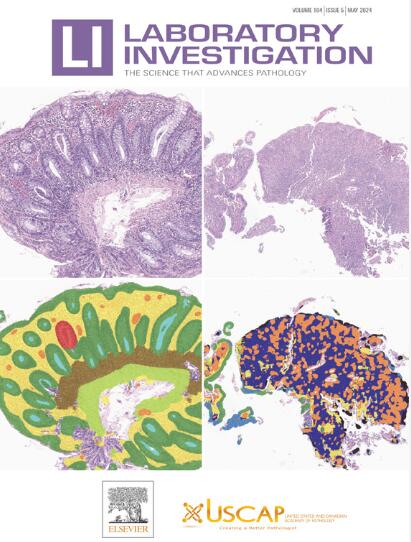在临床来源的人体组织上进行空间转录组学的严谨性和可重复性。
IF 4.2
2区 医学
Q1 MEDICINE, RESEARCH & EXPERIMENTAL
引用次数: 0
摘要
空间转录组分析能够精确量化基因表达,同时将表达谱定位到组织结构上。这些方法的几个实施方案已经作为商业化平台发布,这将使多个实验室能够提高我们对人类疾病机制的理解。人们对将这些方法应用于临床试验或作为实验室开发的测试来帮助诊断疾病也有浓厚的兴趣。然而,在这些技术可以广泛应用于临床研究和诊断之前,有必要彻底了解它们在现实世界条件下的表现。在这项研究中,我们审查了技术的可重复性,数据归一化方法和分析灵敏度,主要集中在一种广泛使用的空间转录组学方法,数字空间分析(DSP)。我们还将其性能与单分子成像仪(SMI)进行了比较,SMI是一种具有单细胞分辨率的新平台。以临床来源的人类肾脏组织和活检为例,我们发现DSP具有高度的严谨性和可重复性。我们表明,标准化方法可以影响空间转录组学数据的生物学解释。虽然多细胞和单细胞分辨率方法之间有很好的一致性,但在成本、执行时间和检测灵敏度方面存在权衡,这可能会影响选择哪种方法。我们的研究为将空间转录组学方法纳入临床工作流程奠定了实践基础。本文章由计算机程序翻译,如有差异,请以英文原文为准。
Rigor and Reproducibility of Spatial Transcriptomics Performed on Clinically Sourced Human Tissues
Spatial transcriptomic profiling enables precise quantification of gene expression with simultaneous localization of expression profiles onto tissue structures. Several implementations of these approaches have been released as commercialized platforms that will allow multiple laboratories to improve our understanding of human disease mechanisms. There is also intense interest in applying these methods in clinical trials or as laboratory-developed tests to aid in the diagnosis of disease. However, before these technologies can be broadly deployed in clinical research and diagnostics, it is necessary to thoroughly understand their performance in real-world conditions. In this study, we vet the technical reproducibility, data normalization methods, and assay sensitivity focusing predominantly on one widely used spatial transcriptomics methodology, digital spatial profiling. We also compare its performance with a single molecular imager, a newer platform with single-cell resolution. Using clinically sourced human kidney tissues and biopsies as exemplars, we find that digital spatial profiling exhibits high rigor and reproducibility. We show that normalization approaches can impact the biological interpretation of spatial transcriptomics data. Although there is good concordance between multicellular and single-cell resolution methods, there are tradeoffs in cost, execution time, and sensitivity of detection, which may affect which approach is chosen. Our study lays a practical foundation for the incorporation of spatial transcriptomics methods into clinical workflows.
求助全文
通过发布文献求助,成功后即可免费获取论文全文。
去求助
来源期刊

Laboratory Investigation
医学-病理学
CiteScore
8.30
自引率
0.00%
发文量
125
审稿时长
2 months
期刊介绍:
Laboratory Investigation is an international journal owned by the United States and Canadian Academy of Pathology. Laboratory Investigation offers prompt publication of high-quality original research in all biomedical disciplines relating to the understanding of human disease and the application of new methods to the diagnosis of disease. Both human and experimental studies are welcome.
 求助内容:
求助内容: 应助结果提醒方式:
应助结果提醒方式:


